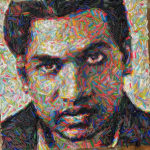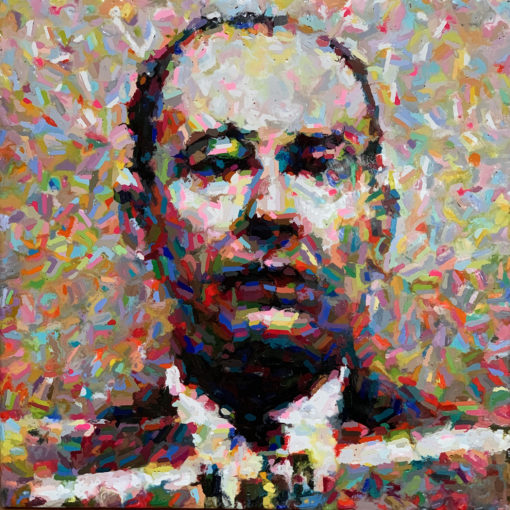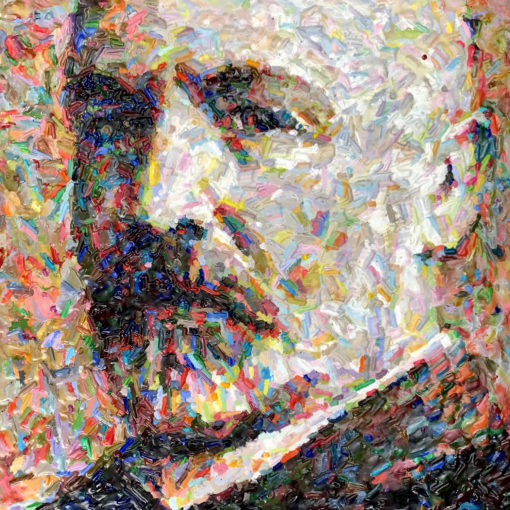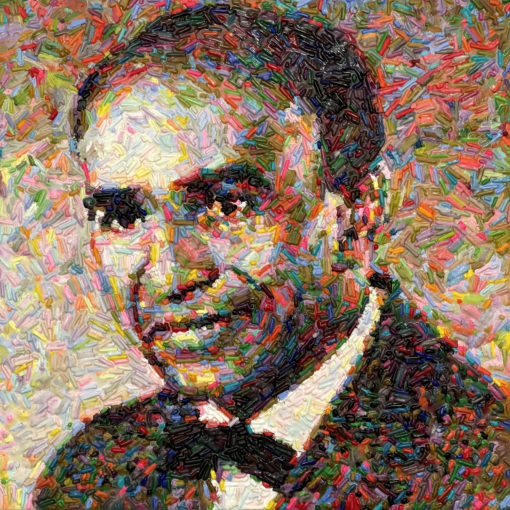Srinivasa Ramanujan (Mathematician Series) –36×36”
Melted hand cast encaustic crayon
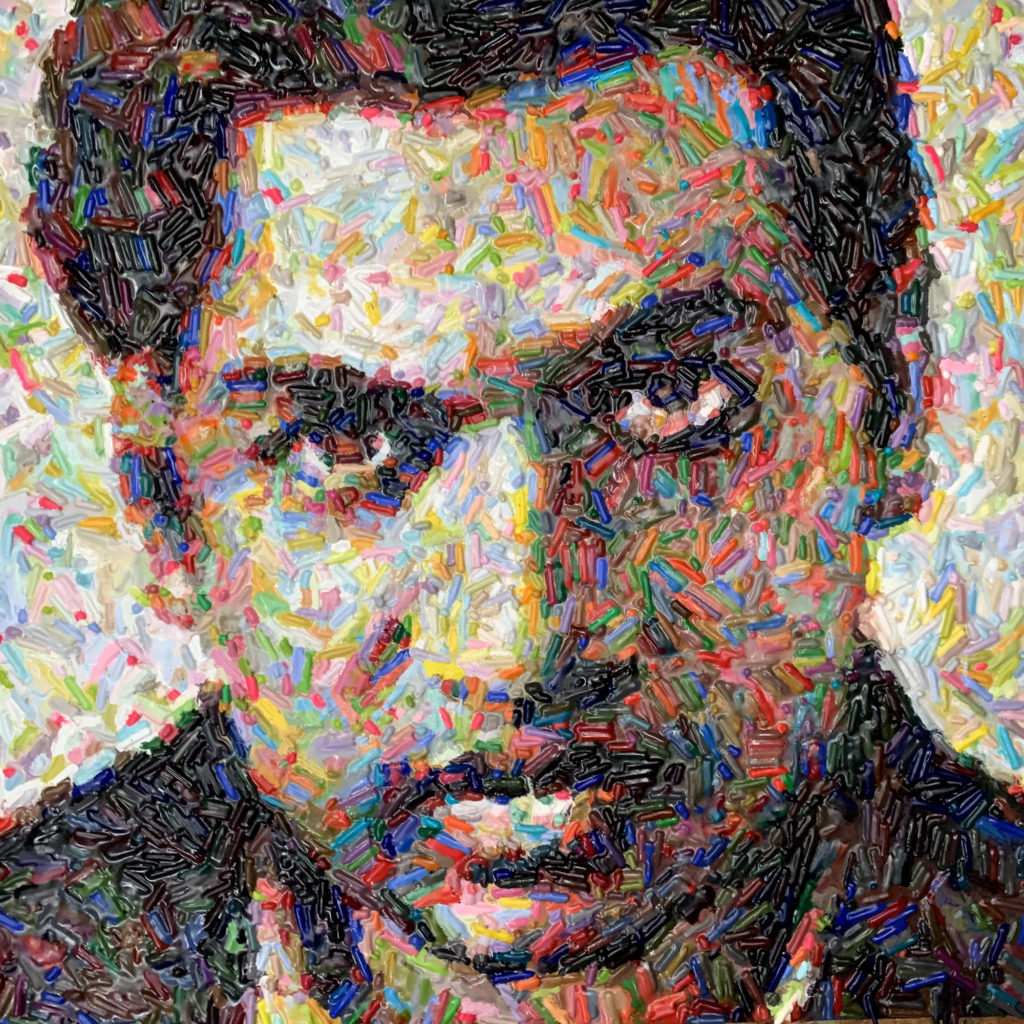
Srinivasa Ramanujan (1887-1920) was born a Hindu in southeastern India. During his school years, he really only wanted to work on mathematical problems, so it was difficult for him to pass any of his other courses. After taking mostly math classes, he found jobs as a math tutor and accountant, but he was continually plagued by poverty and hunger. In his free time, he worked extensively on his own with chalk and a chalkboard or paper, which was expensive, until he came to a point where he had surpassed his teachers and mentors. When he was 25 years old, he wrote to G. H. Hardy at Trinity College at Cambridge with some of his findings, and it took Hardy mere hours to conclude that Ramanujan was a genius. Hardy arranged for Ramanujan to come to Cambridge to get his PhD, and the two became close friends and collaborators.
As portrayed in the movie, The Man Who Knew Infinity, the professors at Trinity were bothered by Ramanujan’s tendency to scribble down his findings without showing how he arrived at those solutions. Math teachers infamously dock a student points if they don’t show their work, but in Ramanujan’s case, he was accustomed to paper being too expensive and used it only to show the end results of his formulae after working them out with chalk. Also, he had an incredible memory for long strings of numbers and claimed that his ideas came to him in dreams and visions from a Hindu goddess. So mathematicians have been working on actually proving his work ever since he was discovered. When his “lost notebook,” the findings from his last year of life when he was dying of hepatic amoebiasis in India, was discovered in library storage in 1976, it provided another treasure trove of formulas to flesh out and prove. Some of these have been found to help to calculate the entropy of black holes.
Ramanujan loved working in number theory: factoring numbers, prime numbers, finding formulas for infinite sums and infinite products. One of his famous discoveries is that if you add up the numbers from 1 to infinity, the answer is -1/12. He also figured out many ways to get pi as the solution and worked with Hardy to originate the circle method for partitions of numbers > 200. For example, the number 5 has 7 partitions, but larger numbers’ partitions are exponentially huge, and this is where formulae come in handy.
1+1+1+1+1
2+1+1+1
2+2+1
3+1+1
3+2
4+1
5
Ramanujan’s work also forms the basis of superstring theory. It helps to sync the laws of relativity with gravity as an influence (planets and large objects) with the laws of quantum mechanics (atomic or sub-atomic particles). More practical applications of his mind-boggling formulae are still forthcoming a whole century after his death.




